Defect Management Life Cycle in HP ALM
Overview
While doing test execution, if the actual result doesn’t match the expected result at that time the defect gets logged. There are various techniques to report these defects. However, the Defect module in HP ALM helps users to report the defects as well as enables them to track them. It helps users to maintain overall quality at any stage of the development process. While working on any project, managing and logging issues is the first concern to look for. In this article, we will describe how to create a new defect, how to link a defect to a requirement, how to upload a defect using Excel, how to search for a defect, and how to get email notifications on reported defects.
Introduction
Default defect management life cycle in hp ALM with flow diagram.
The defect management life cycle in HP ALM has been classified in multiple states. Let’s understand each state with a better explanation.
- New - When a user finds any new defect and posts it. The status will be considered ‘New’.
- Open - When the developer accepts the defects, it changes to ‘Open’ status.
- Rejected - With any particular reason, when the developer rejects the reported issue. It is considered as ‘Rejected’.
- Fixed - When the developer fixes the issue reported by the tester. It is moved to ‘Fixed’.
- Reopen - When the defect is fixed by the developer but somehow during regression or retesting the tester finds it has not been resolved. The status will be ‘Reopen’.
- Closed - If the tester has successfully passed the defect. It is moved to ‘Closed’.
How to Create a New Defect in the Defect Management Life Cycle in HP ALM?
Step -1: Search for the defects in the Quality Center and click on the ‘New Defect’ button.
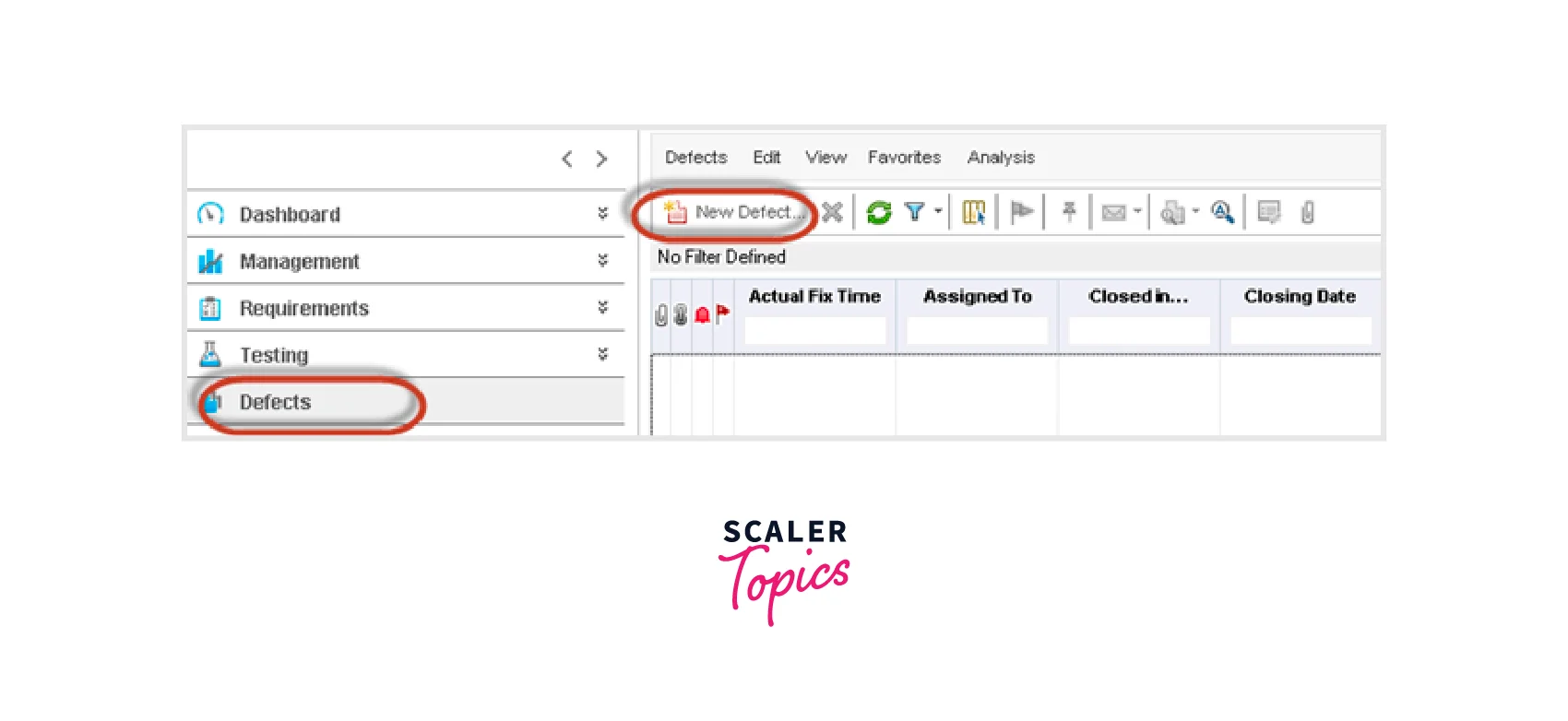
Step - 2: Once the New Defect dialogue opens. Need to fill following details.
A. Who has detected the defect - Type Detected By Field. B. Date when the defect has been reported - Select the Date. C. Severity of the defect. D. Required description of the defect to make it more understandable.
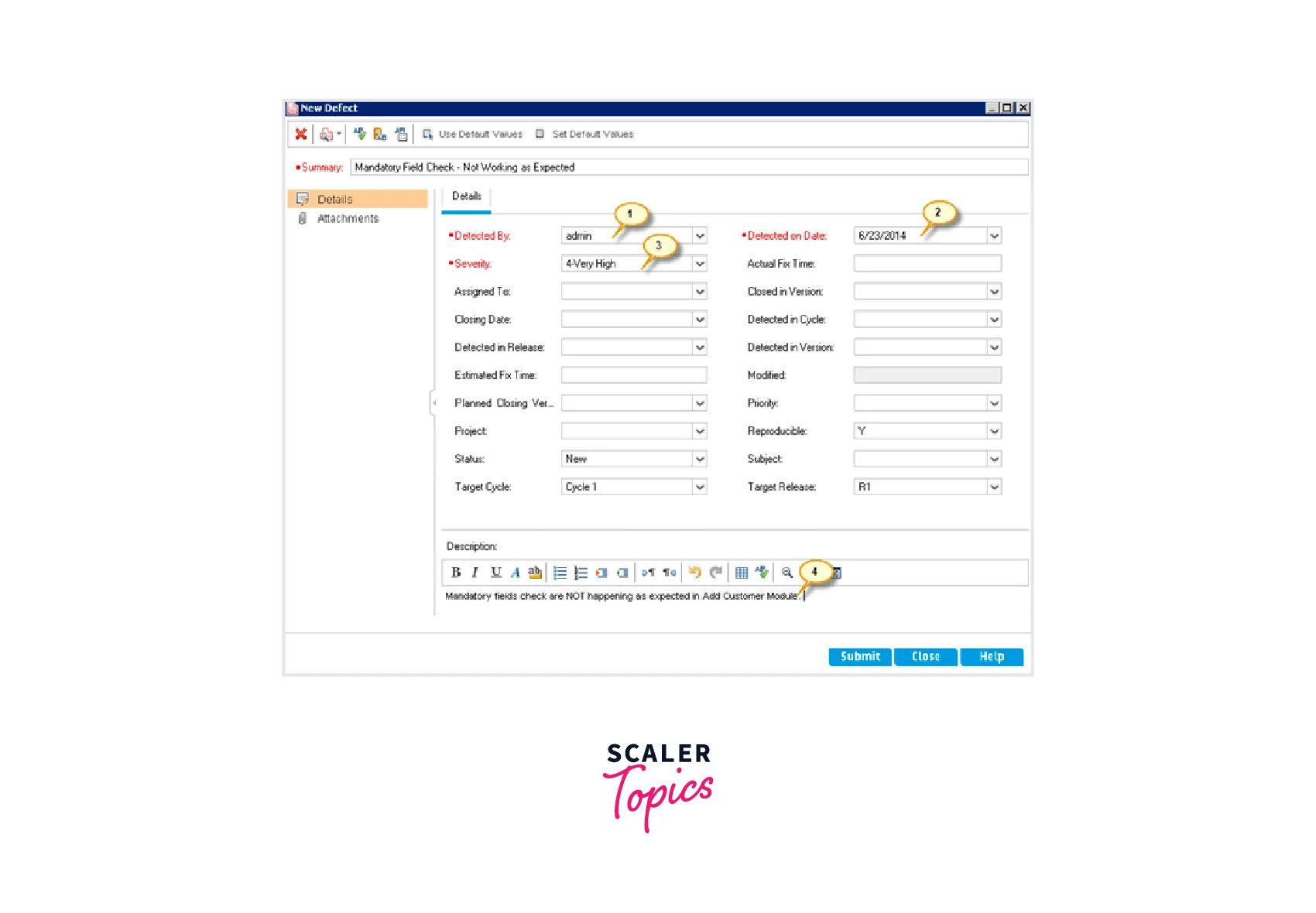
Step - 3: If testers would like to add attachments, they can upload them in the following manner.
A. Click on the ‘Attachment’ tab and select “Attachments”. B. Select the document or any other file. C. Click on ‘Open’.
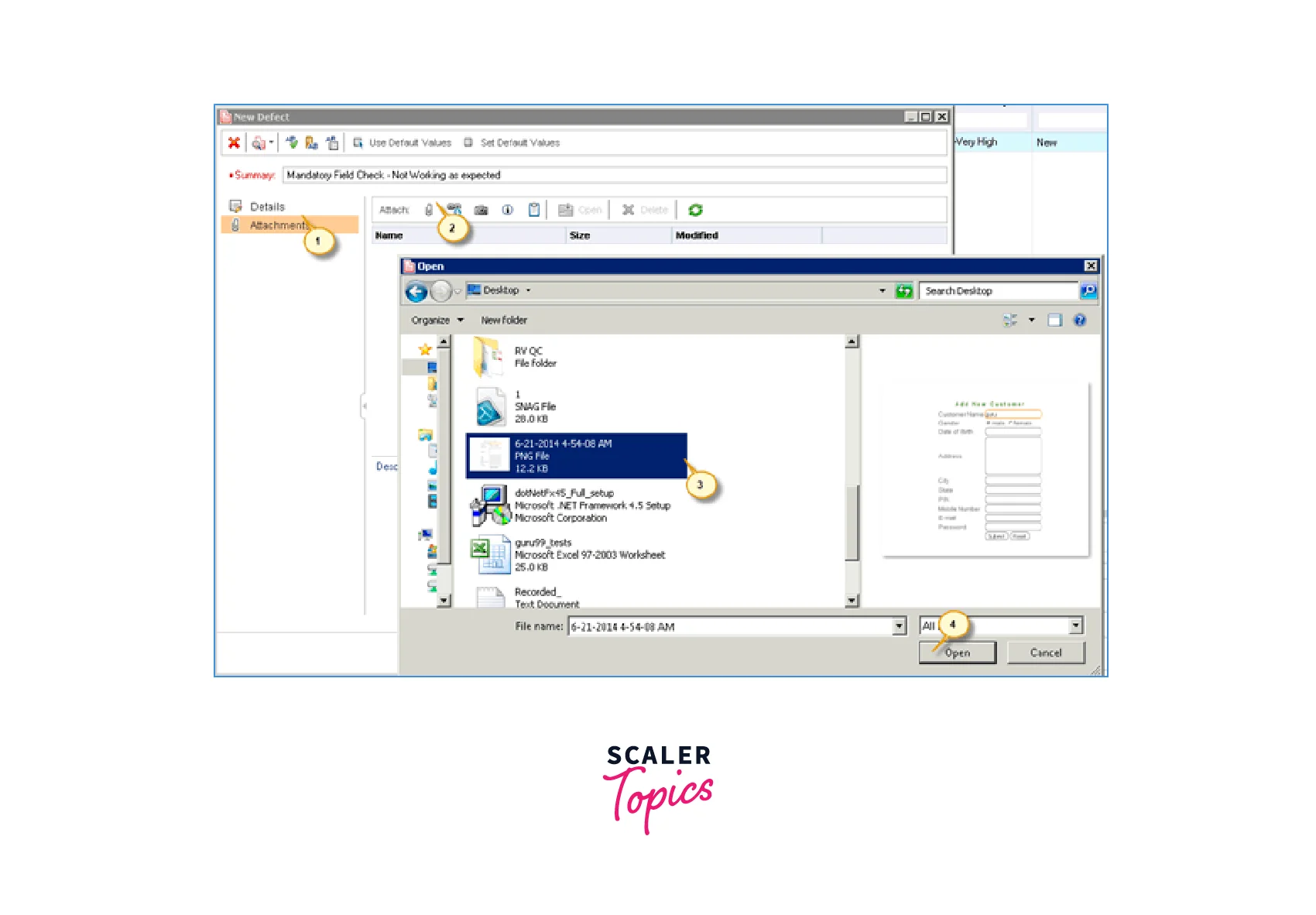
Step - 4: Once the attachment has been uploaded. Click on the submit button to post the defect. It will generate a defect ID.
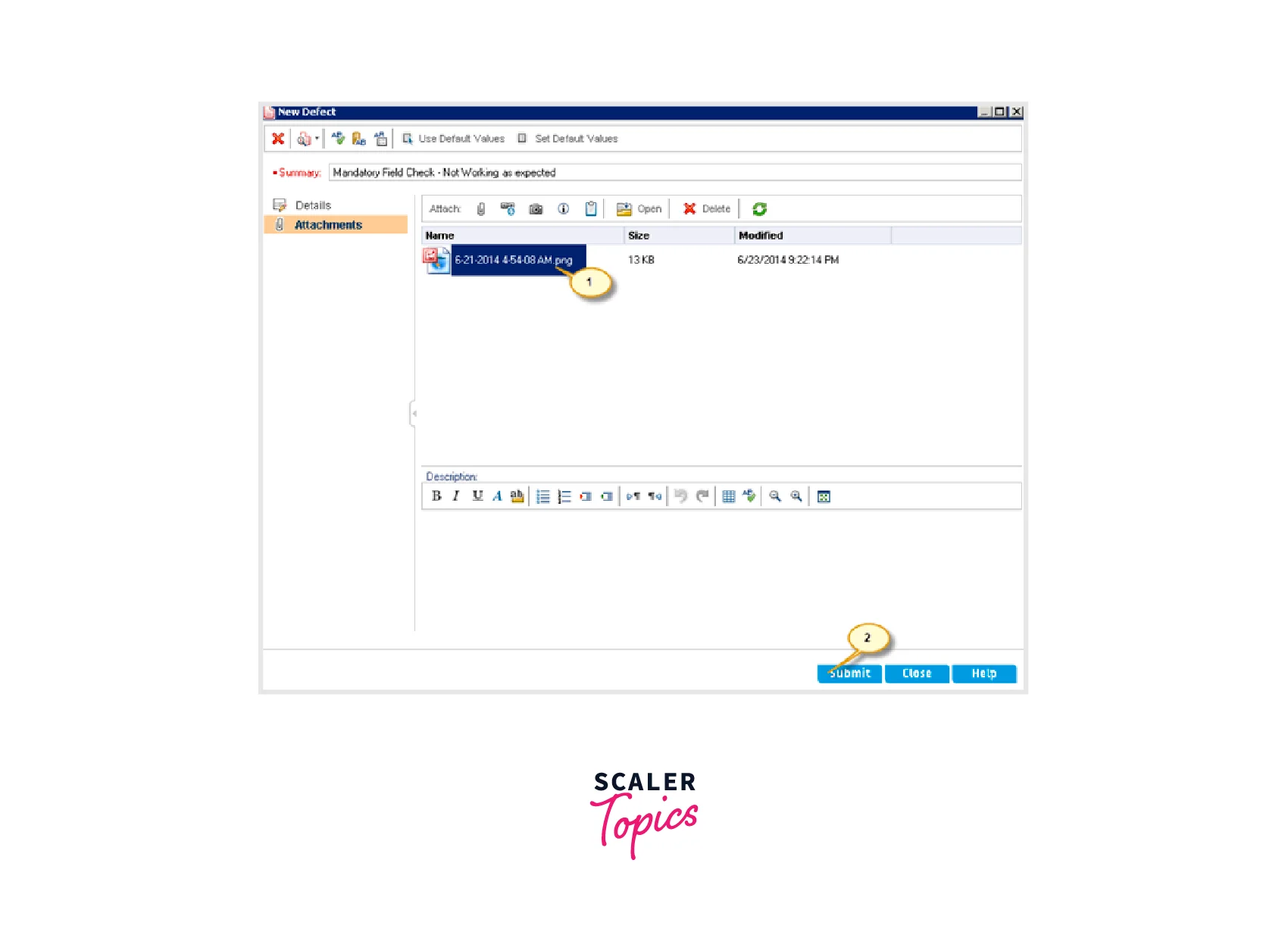
Step - 5: The defect has been posted now. You can review it through the defects tab as shown below.

How to Link a Defect to a Requirement in the Defect Management Life Cycle in HP ALM?
Once the defect has been created, a couple of times they need to be related to each other. Let’s say, a duplicate defect has been created and you would like to relate it to the previous one. To do this
Step - 1: you need to right-click on the defect that you want to link and click on defect details. Step - 2: Click on linked entities to make sure the defect tab is selected.
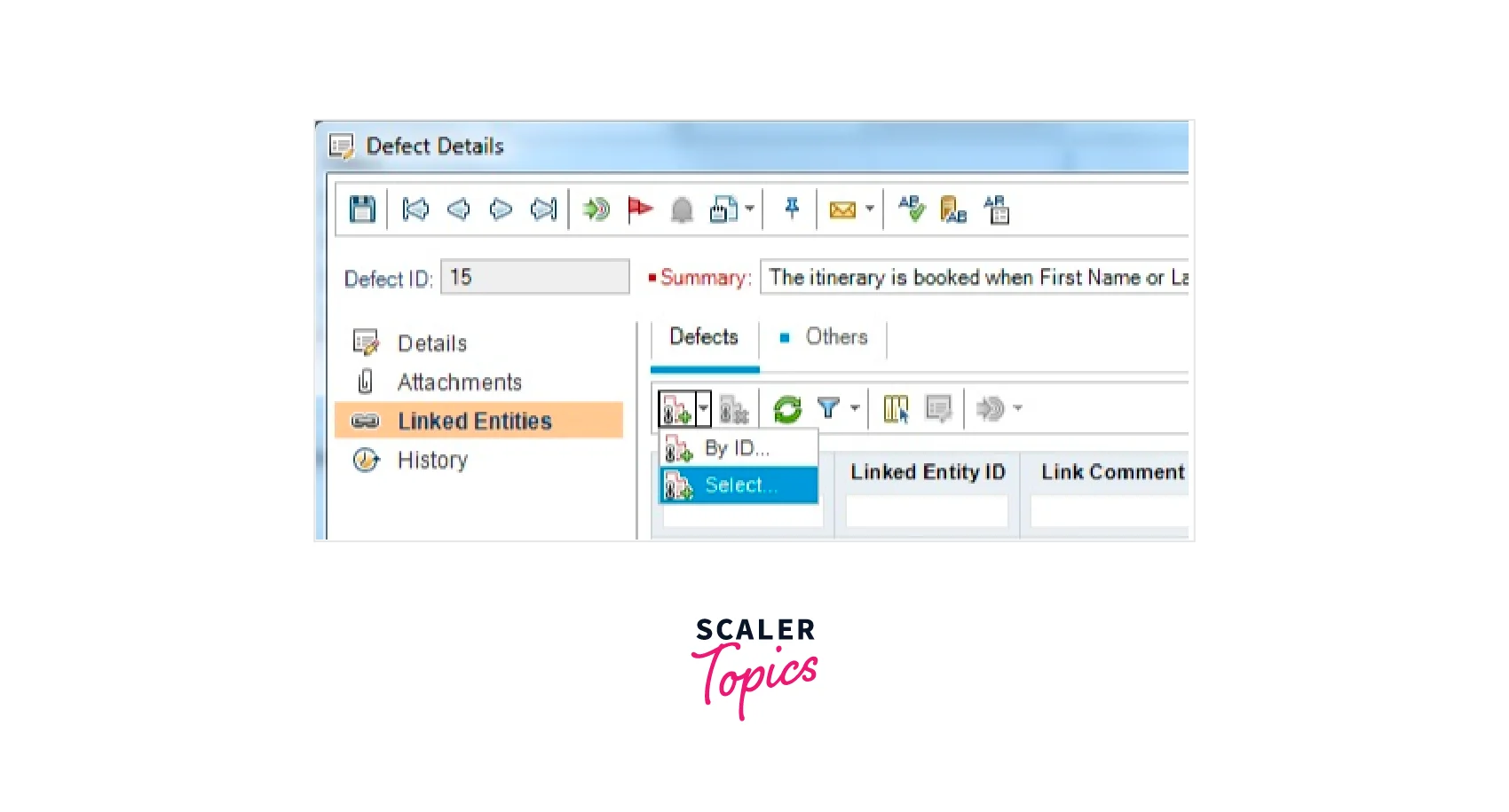
Once both the defects are linked, you can review them.
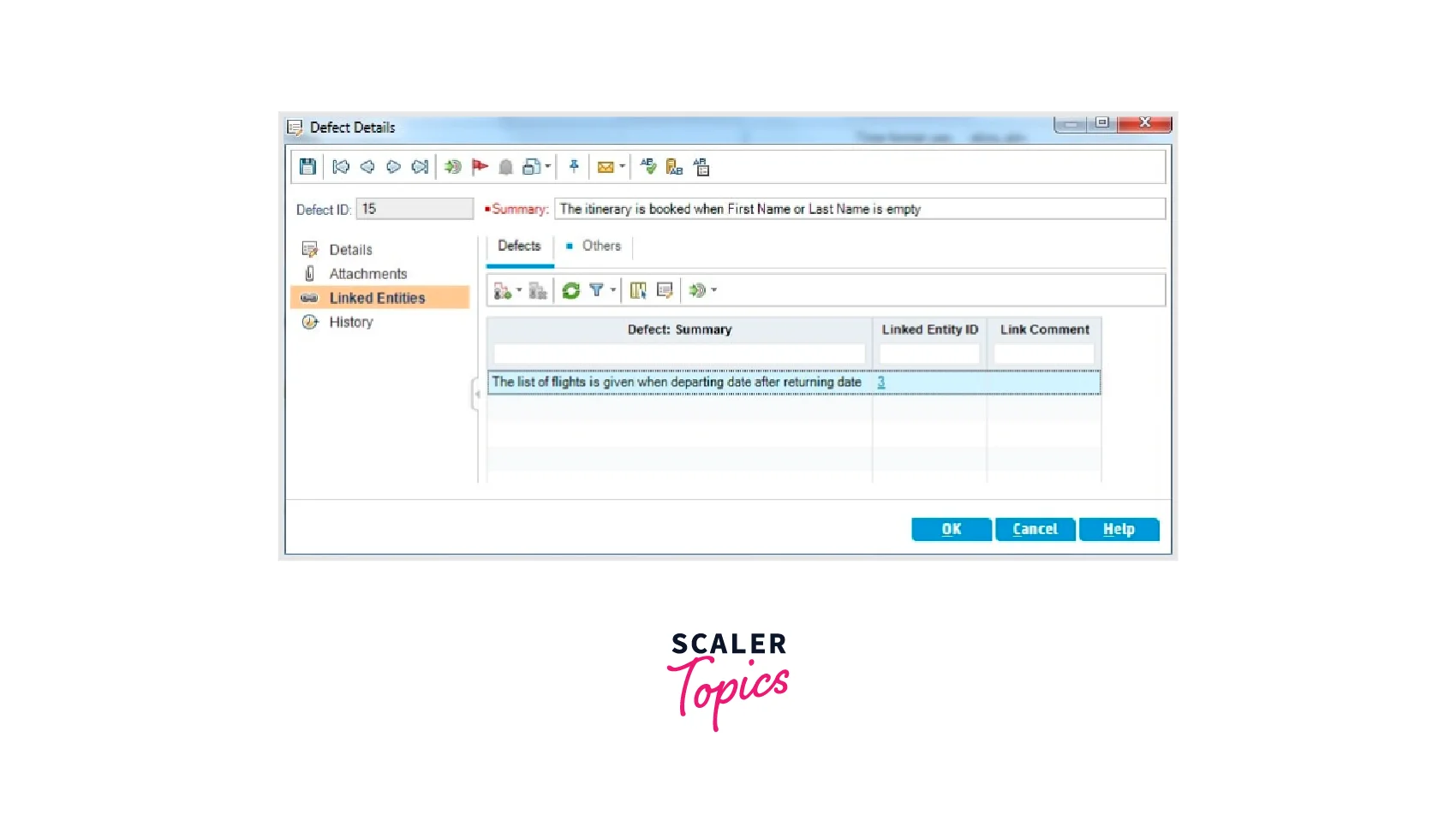
If you would like to link a particular defect with the requirement then also it is possible. For that, Click on others while linking as shown below
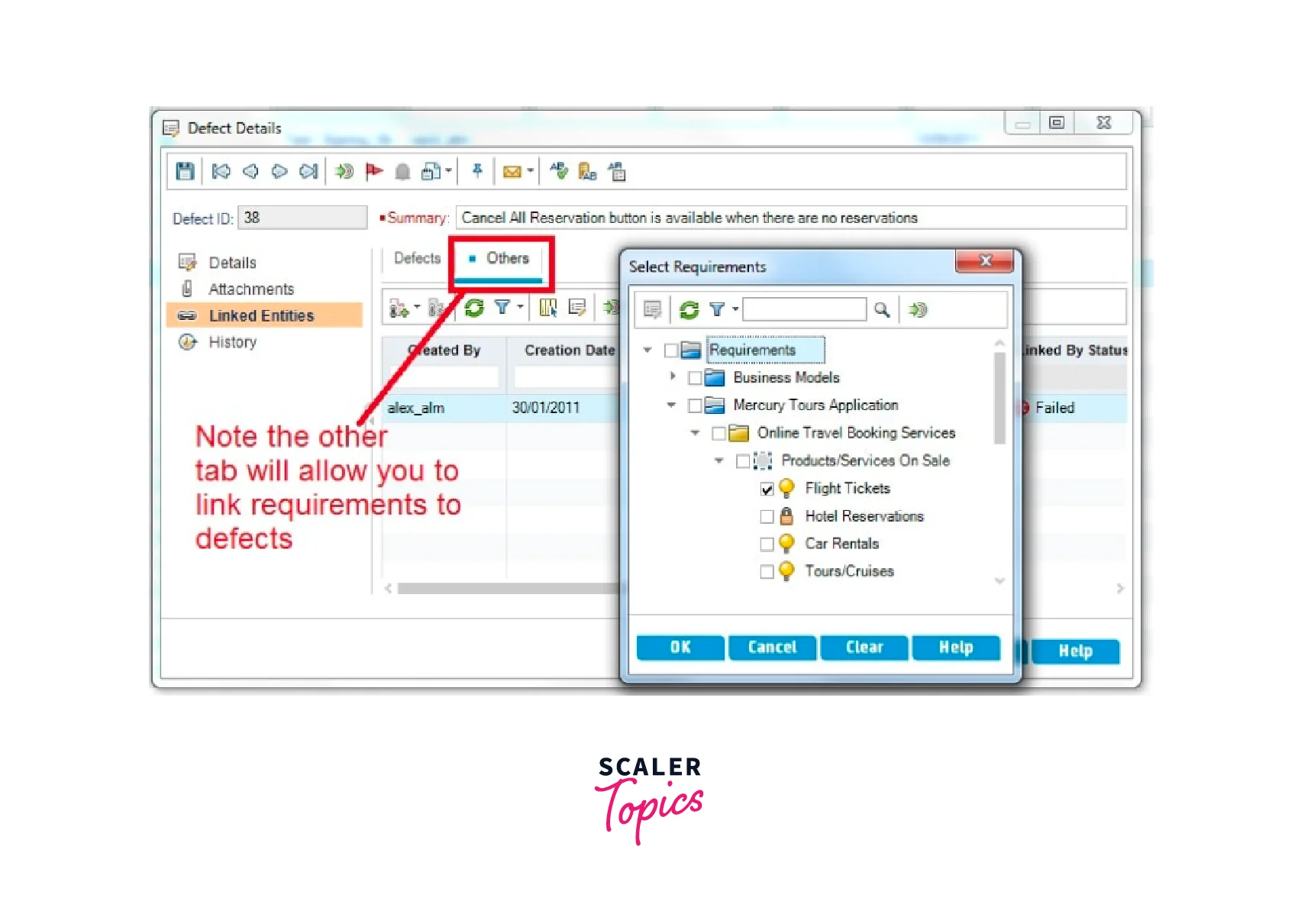
Once the requirement is linked with the existing defect. You can generate a Traceability Matrix. To develop the Traceability Matrix, click on the view menu of ‘Requirements’ and select ‘Traceability matrix’. It will be generated as below.

How do we Upload Defects using Excel in the Defect Management Life Cycle in HP ALM?
Users can't create defects manually. At that time uploading defects using Excel this module helps us to upload issues from Excel to HP ALM. The procedure remains the same as we showed earlier for uploading requirements and tests. However, one needs to keep an eye on the Excel data formatting. It should be the same as ALM allows for importing data.
Step -1: Need to create an Excel file with the required data. For attachments, the user needs to keep the local path of the attachment. ALM will automatically detect the attachment through the path.

Step - 2: Go to the ‘Add-Ins’ tab and select ‘Export to HP ALM’
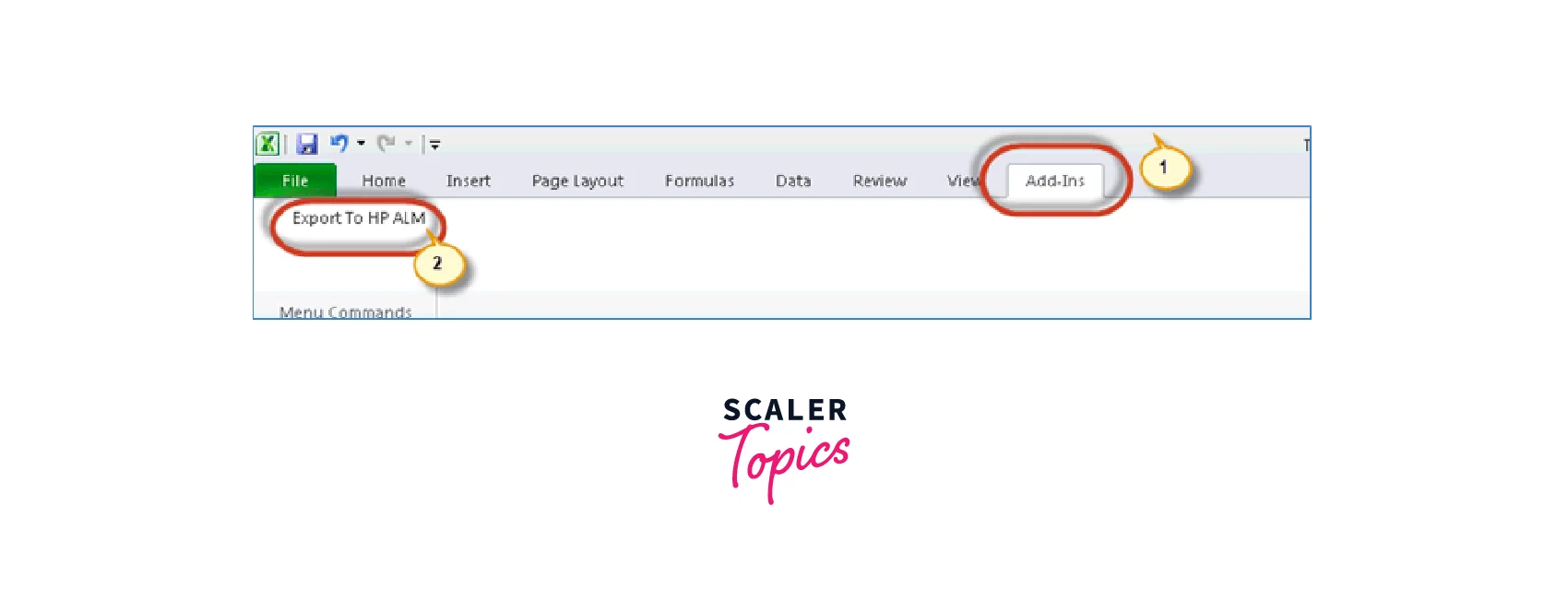
Step - 3: Enter the HP ALM server URL and click on open.
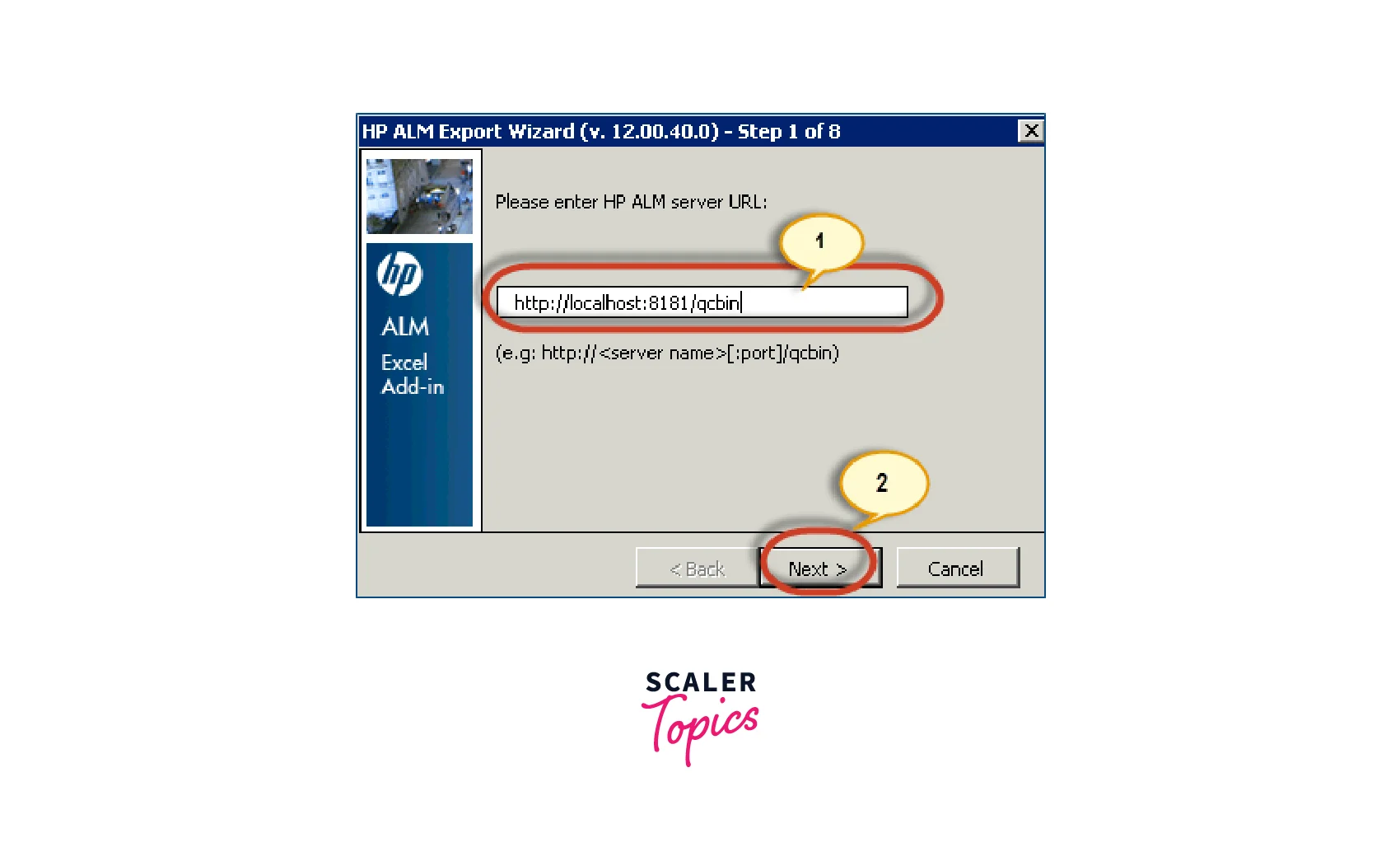
Step - 4: Enter username and password and click on next.
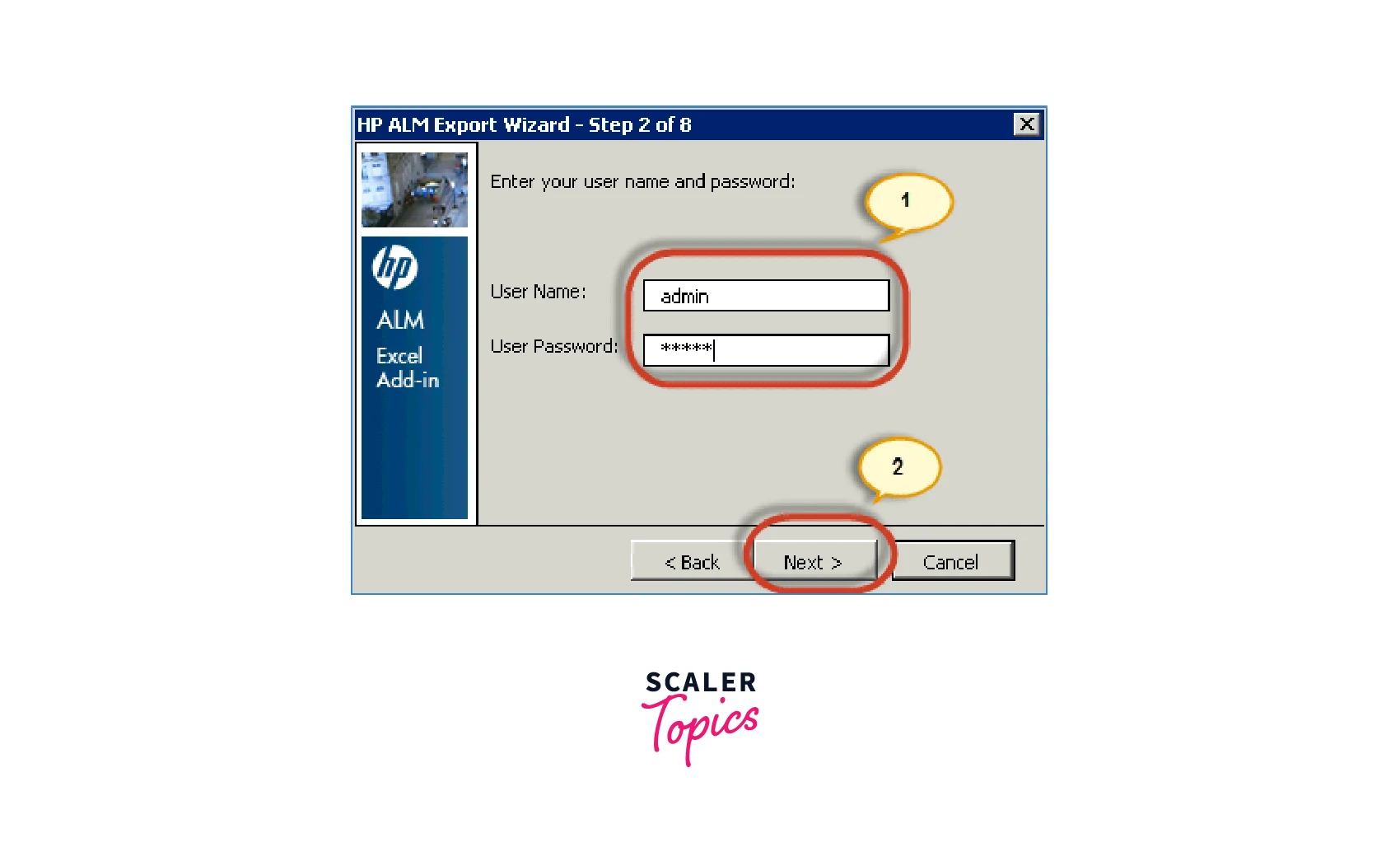
Step - 5: Select the domain and project name where you would like to upload. Click on next
Step - 6: Click on defects as the type of data.
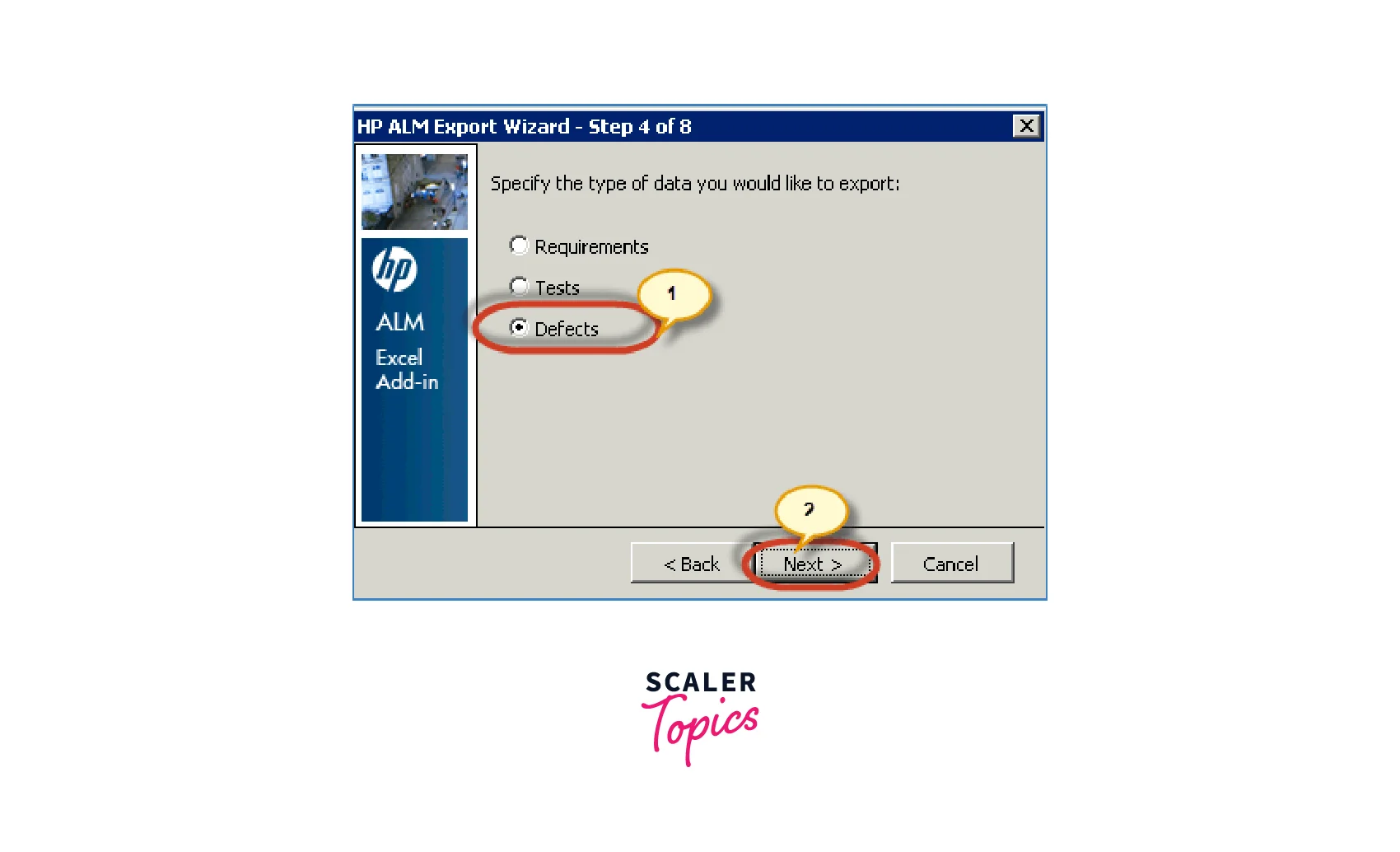
Step - 7: Need to enter the new map as we haven’t created any map before. Therefore, the first selection will be disabled. If you would like to reuse the same map then don’t select Create a temporary map. Click on next
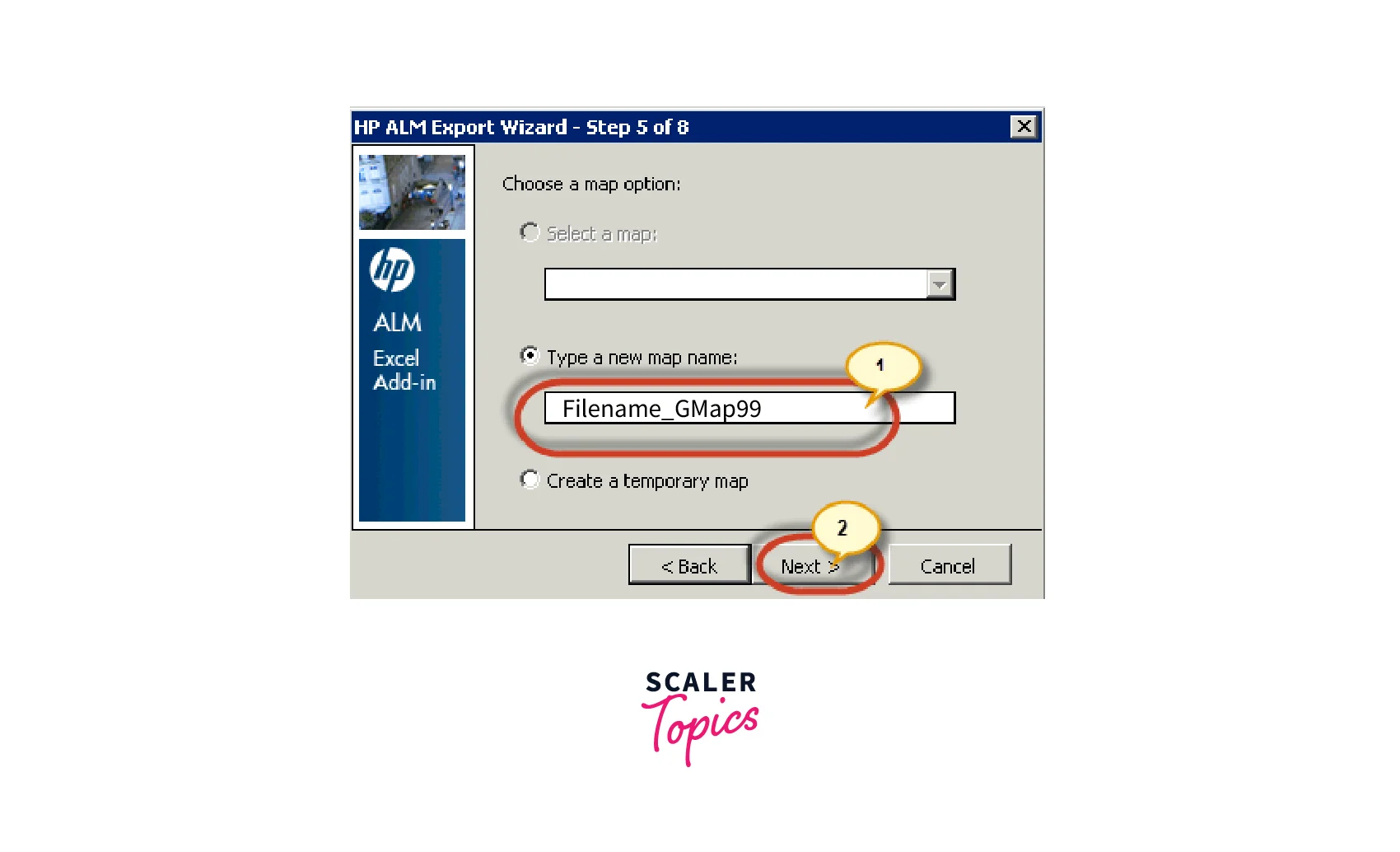
Step - 8: Mapping dialogue will open. Click on the field that you would like to map with the current table and click on the arrow. Select as many fields as you would like to map. Click on Next Arrow.
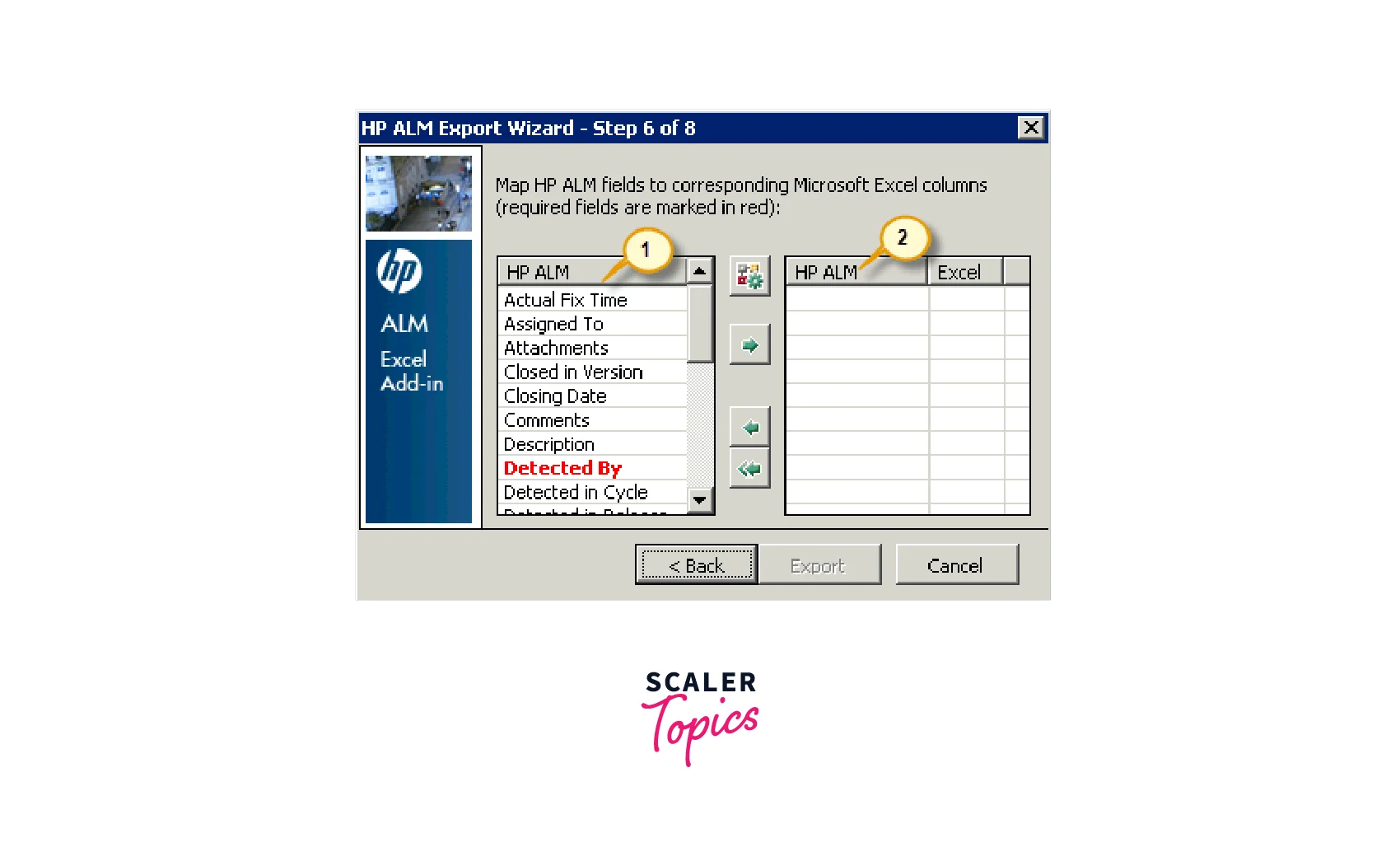
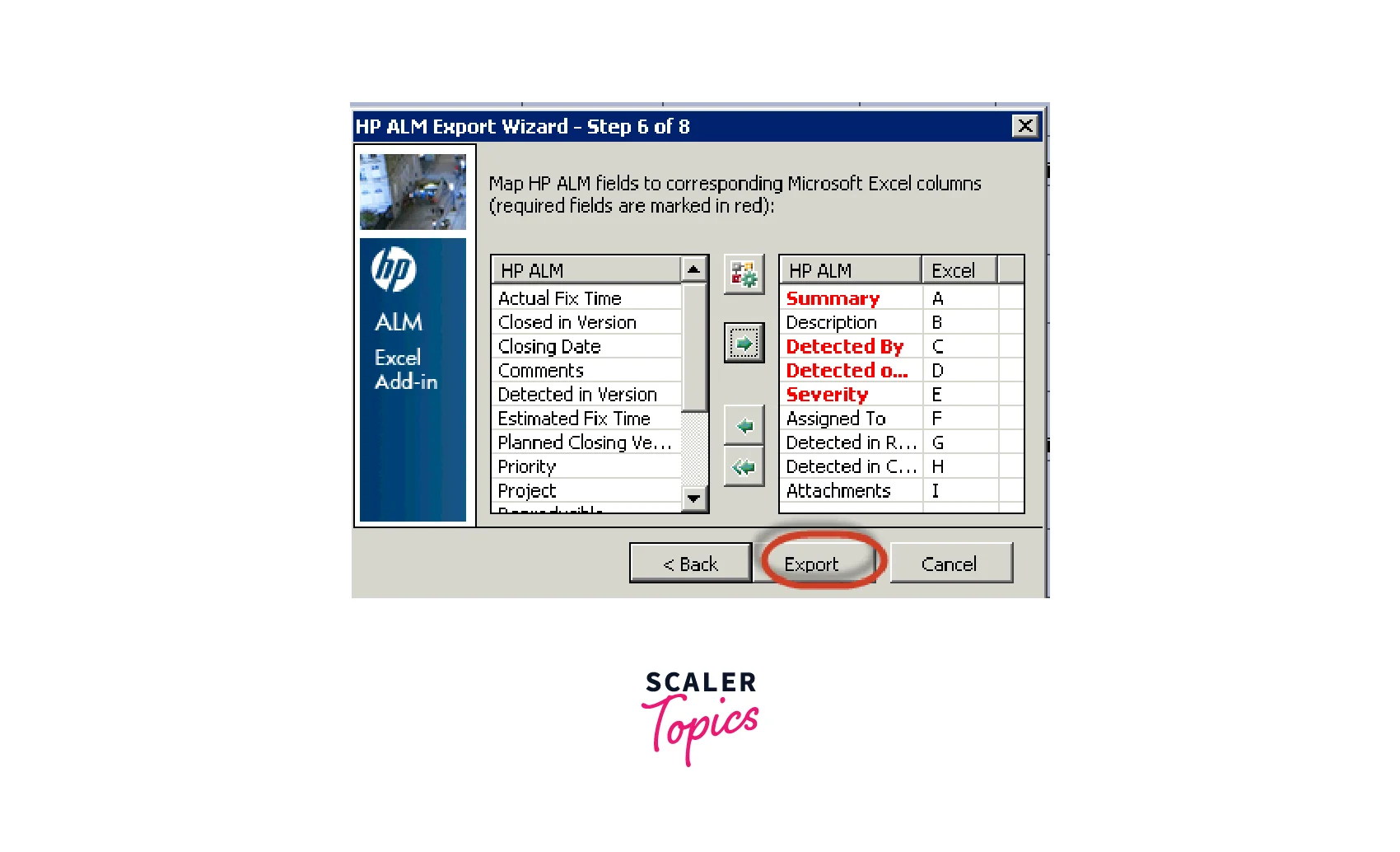
Step - 9: Once it is successfully uploaded, you will be able to see the finish button.
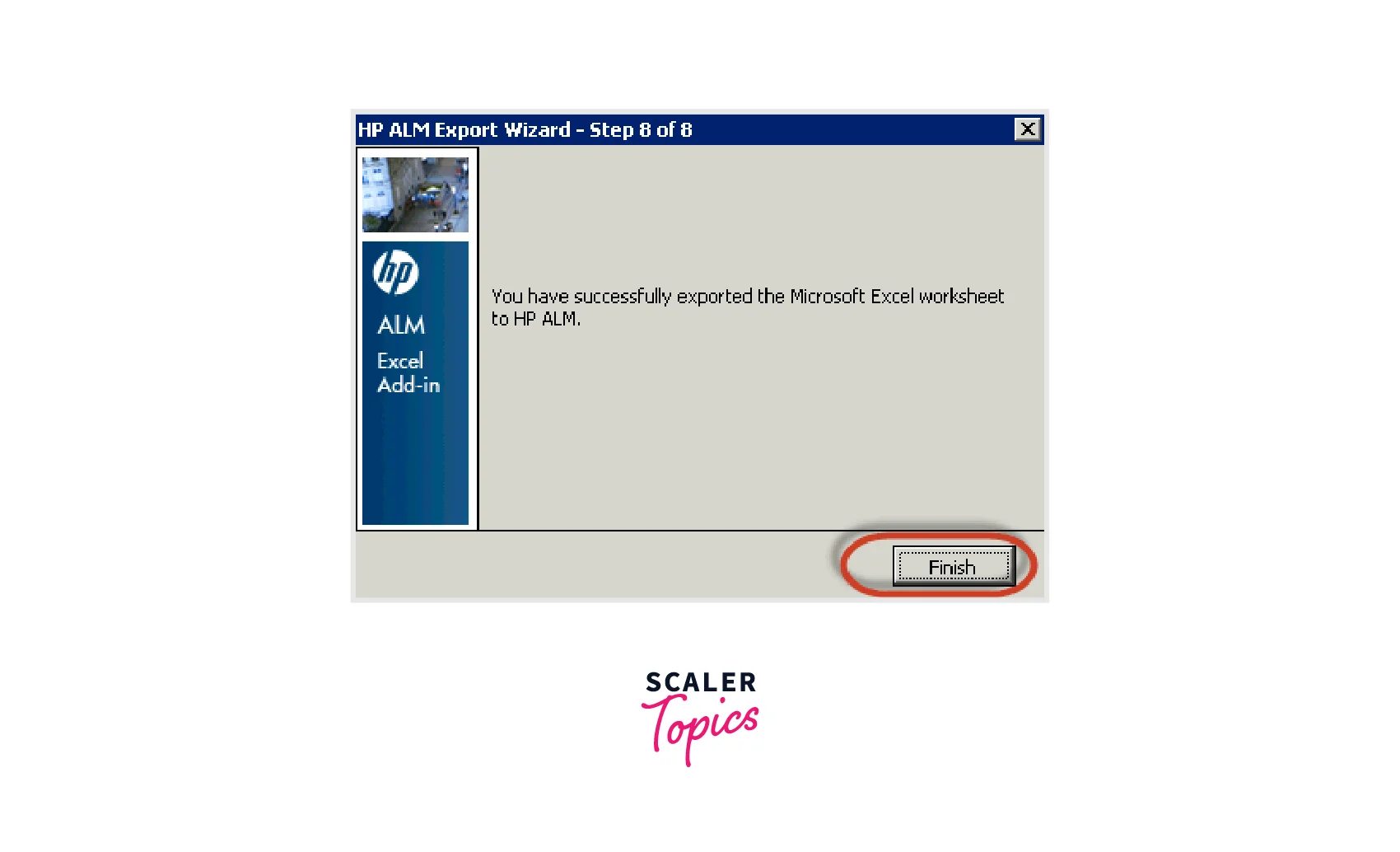
How to search for a Defect in the Defect Management Life Cycle in HP ALM?
Once you log the defect into HP ALM, it will contain all the defects right from the very first time. It will be difficult to track the defects once multiple defects will get uploaded. Hence, the user will need search functionality to track the defects. Let’s see how we can search for a defect.
Step - 1: Go to the edit menu and click on find.
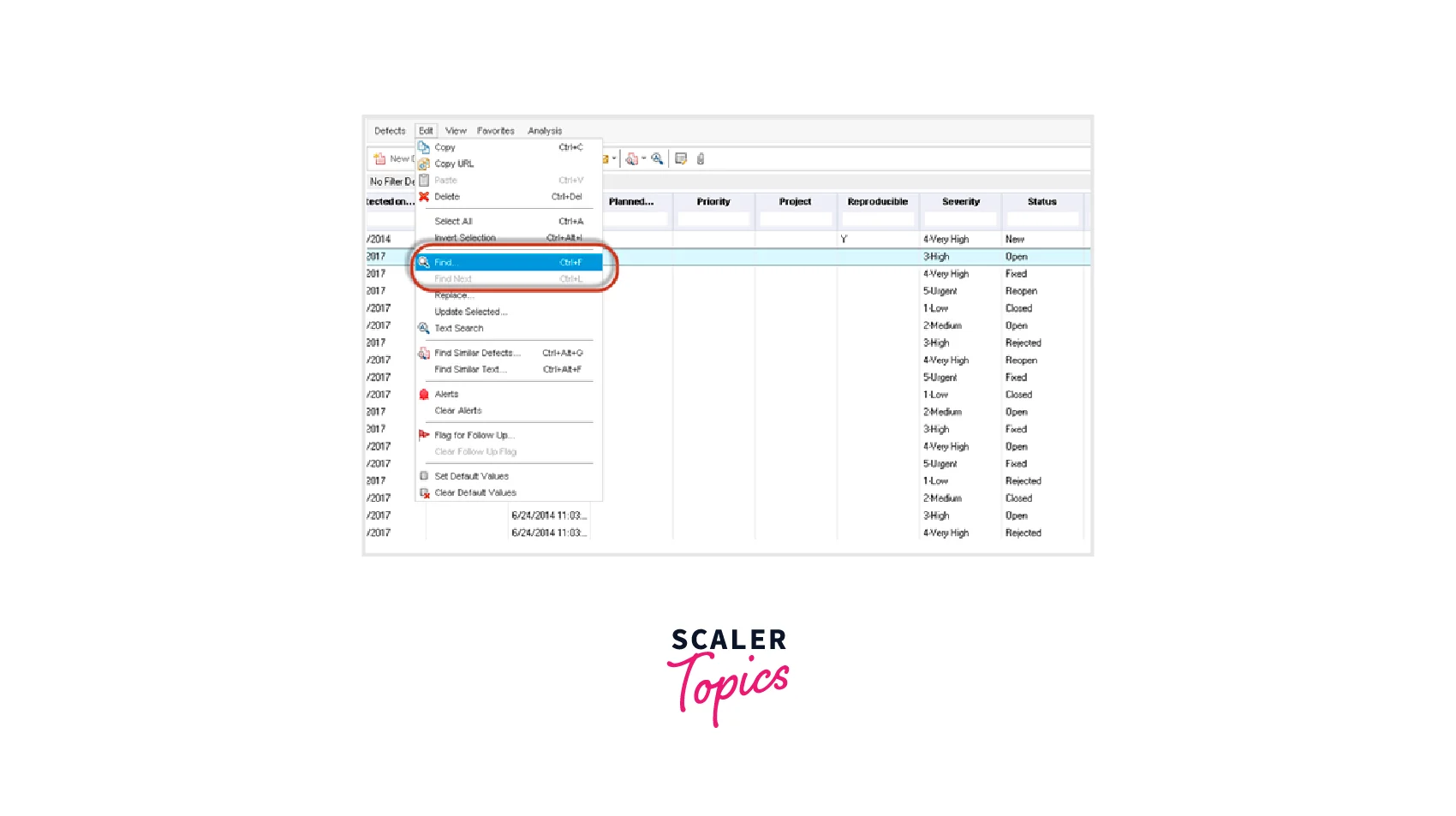
Step - 2: Enter the field value that you would like to search and click on next.
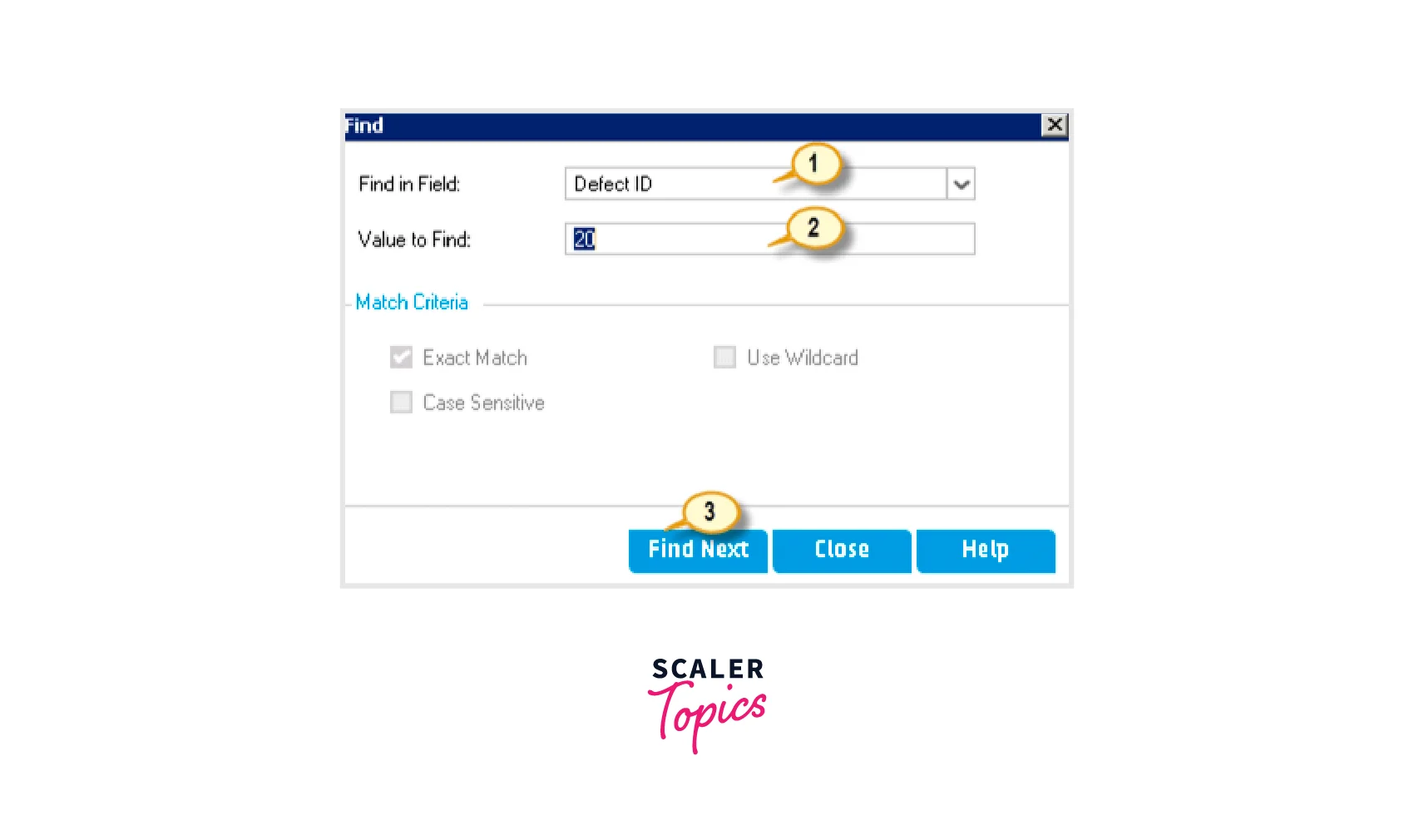
ALM will display related items in the background
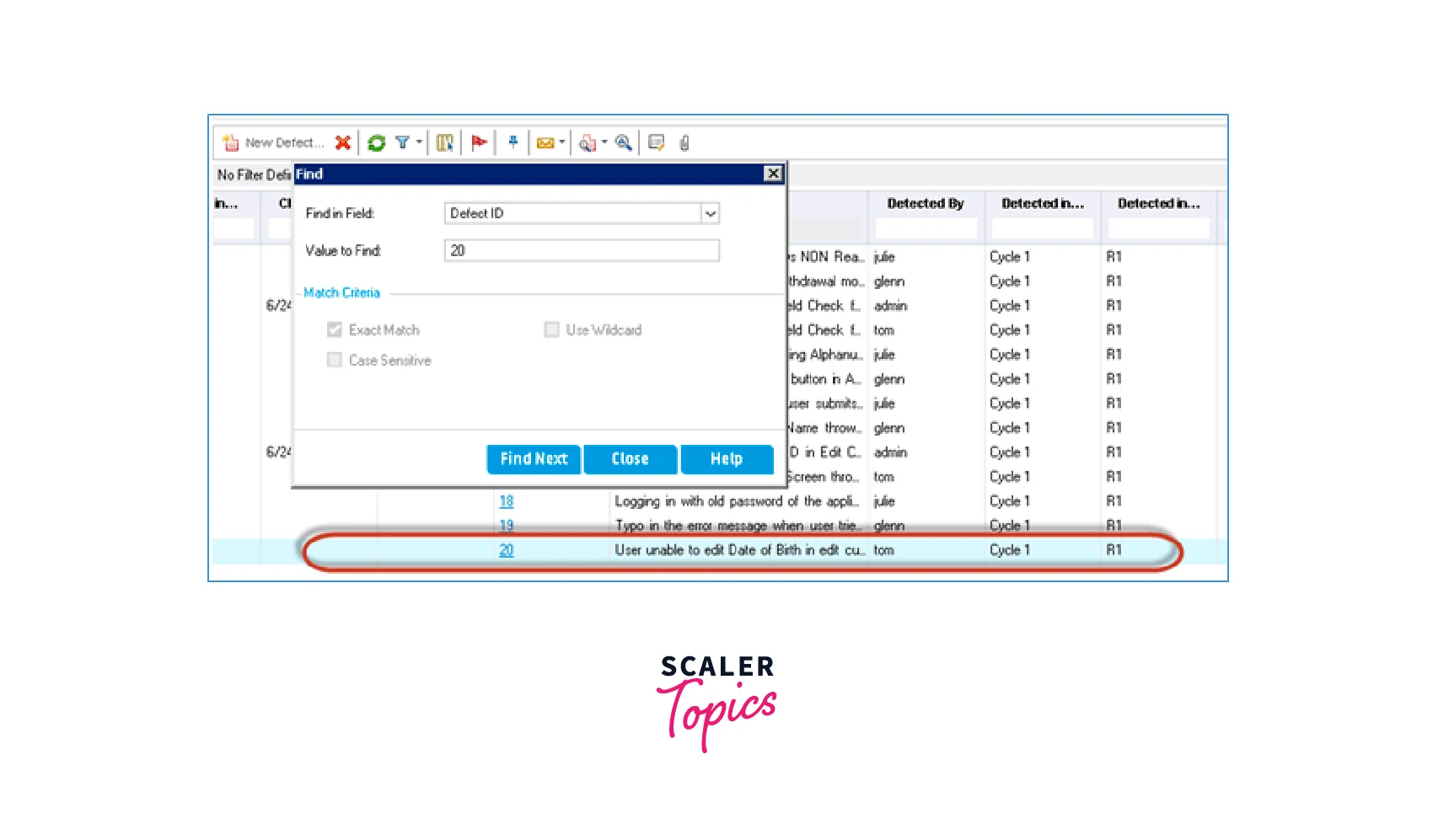
How Do We Receive Status Update Emails Using the Defect Management Life Cycle in HP ALM?
When someone makes any change to the defects, the assigned user will get notified via email. Here, a few configurations have been shown for setting up email notifications. The email will be triggered based on the setting under the “Alerts’ tab.
If any user needs to receive an email regarding the job status being moved to ‘fixed’ then the following information will get visible.
- Email sent to - Person's name
- Details of mail
- The mail has been triggered due to the last status change activity.
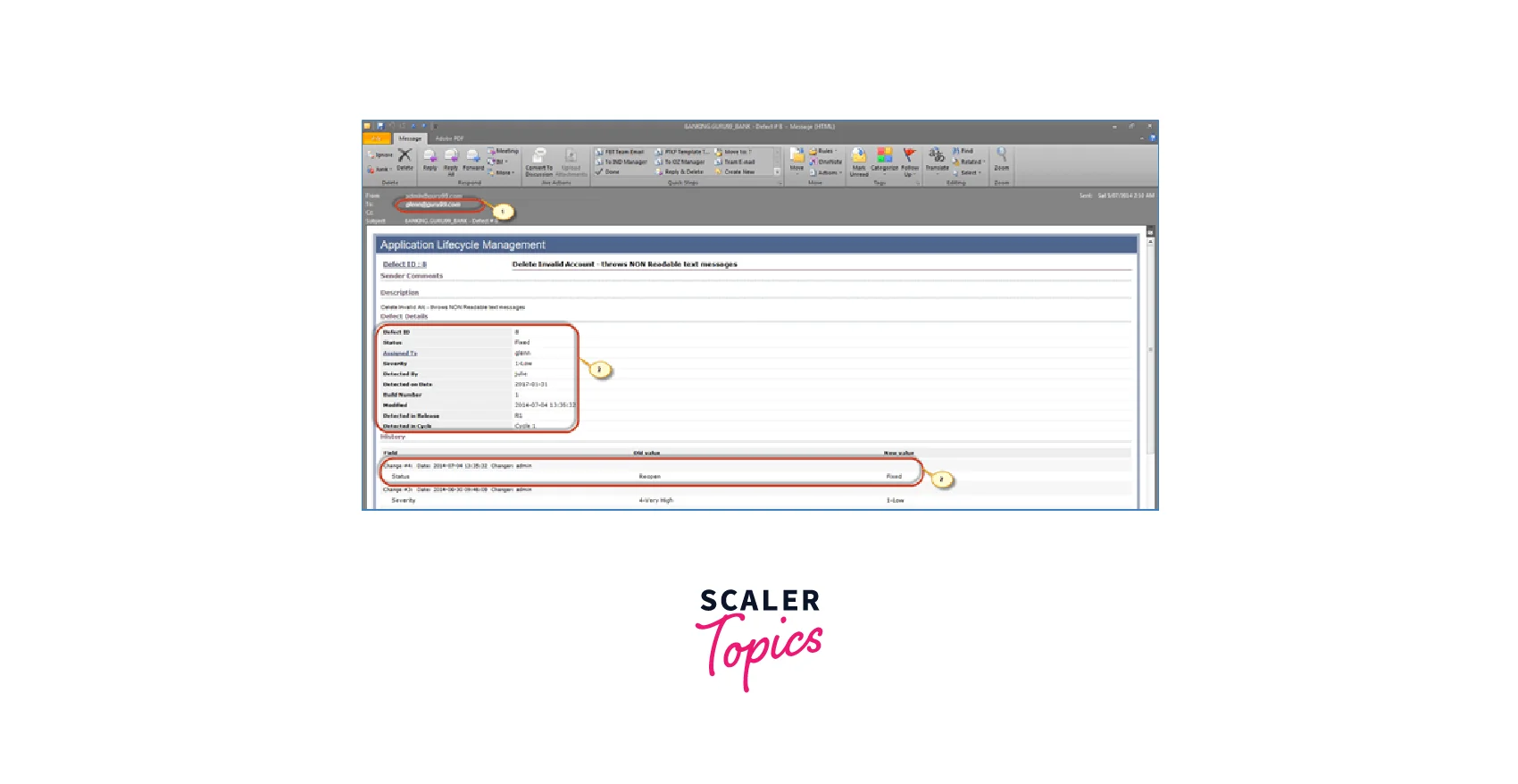
Conclusion
- HP Application Lifecycle Management (ALM) is a tool that provides end-to-end support for the Defect Management Life Cycle, allowing teams to manage defects efficiently and effectively.
- The Defect Management Life Cycle in HP ALM typically includes six stages: Defect Identification, Defect Reporting, Defect Triage, Defect Resolution, Defect Verification, and Defect Closure.
- By following the Defect Management Life Cycle in HP ALM, teams can ensure that defects are tracked and resolved efficiently, leading to better quality software applications, improved customer satisfaction, and reduced maintenance costs.
